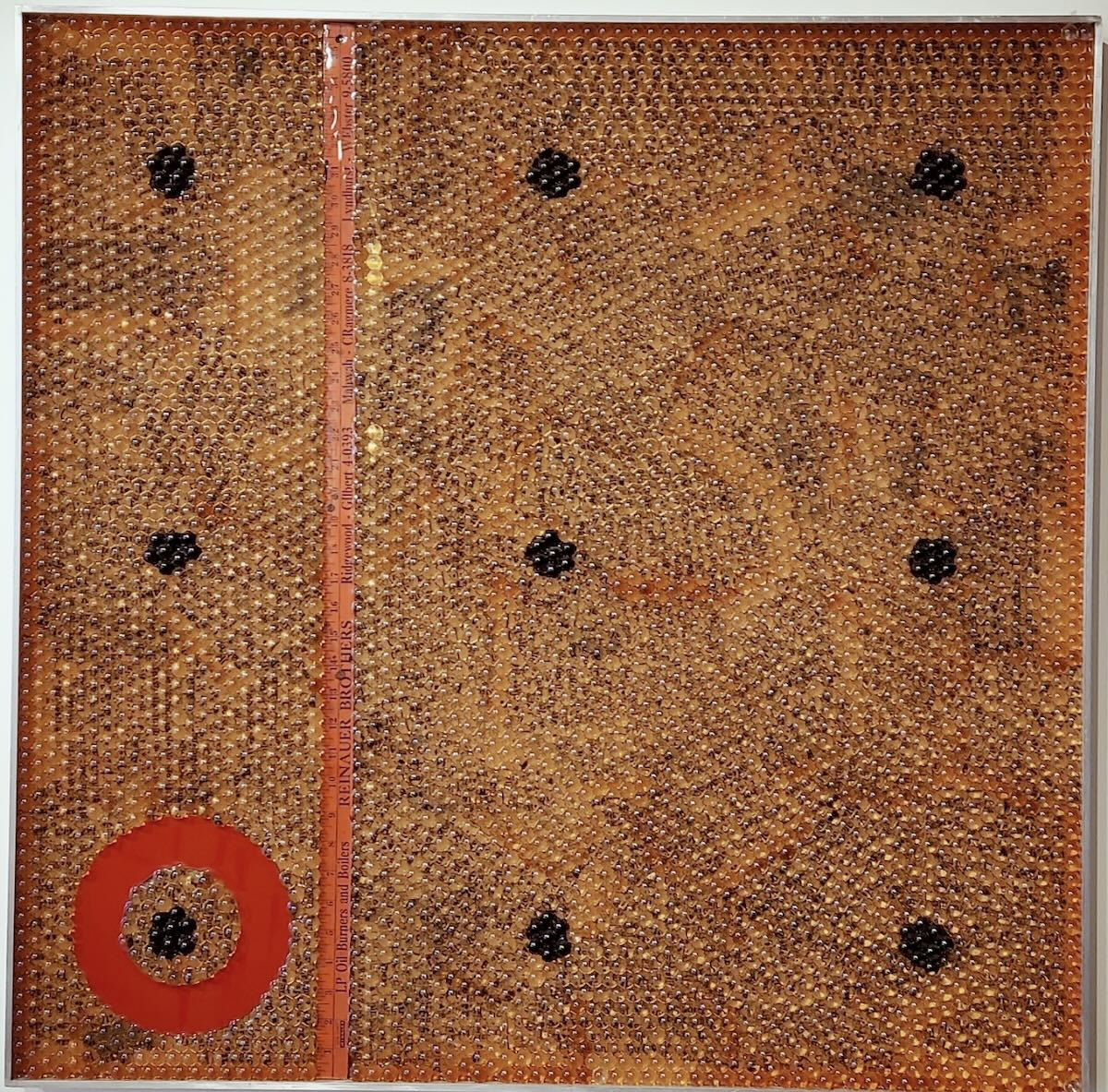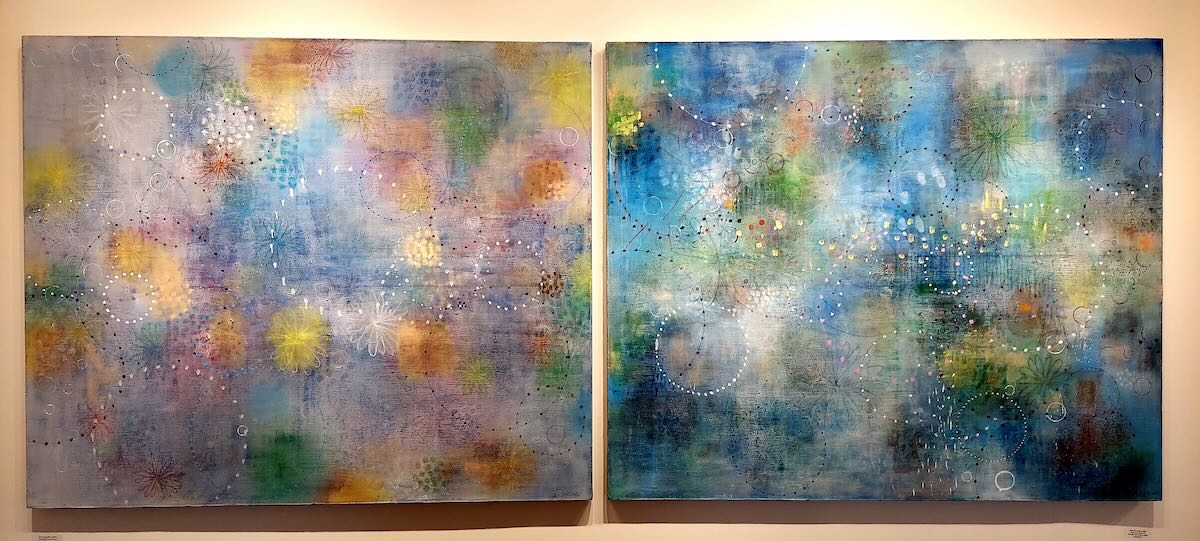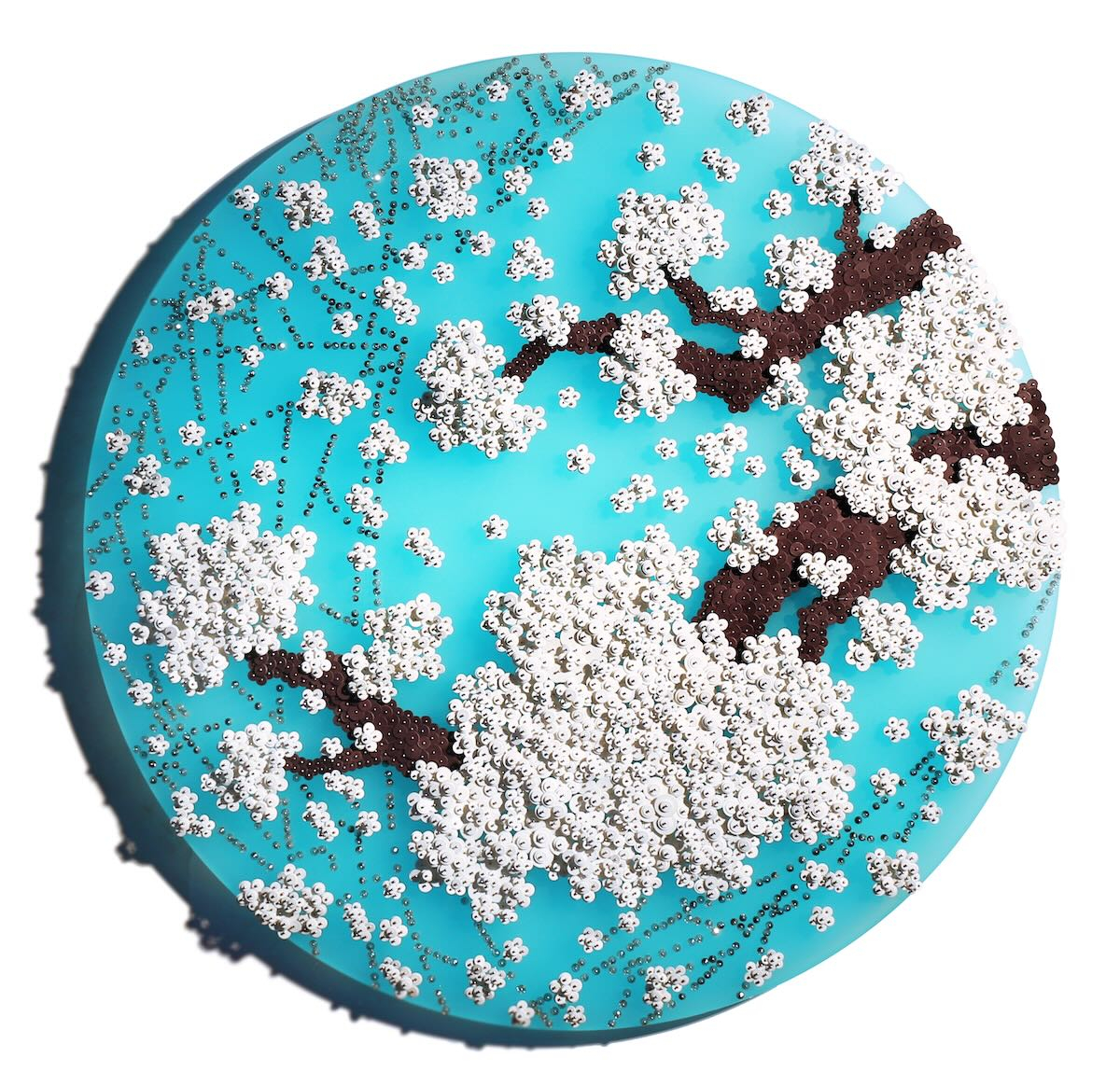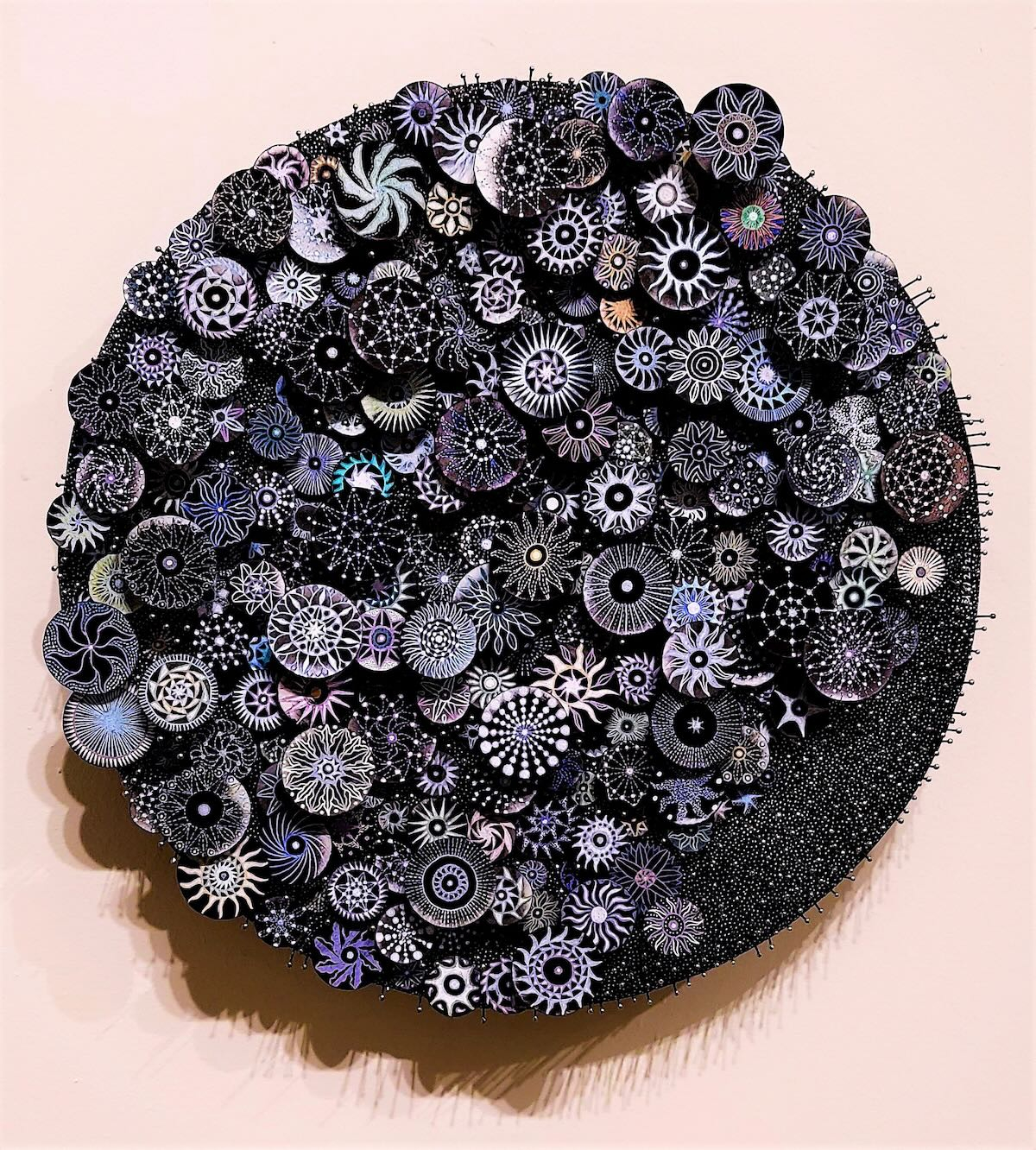
Circles: Centrifugal and Centripetal
Paris Koh Fines Arts, Fort Lee, NJ
Apropos of a post-Covid social awakening, was the inaugural opening of Paris Koh Fines Arts, a new art space in Fort Lee, New Jersey. Their first was a group exhibition entitled Circles -- Centrifugal and Centripetal: Jose Camacho, Jong Sook Kang, Daru Junghyang Kim, Mikyung Kim, Ran Hwang, Jong Rim Song, Heejung Kim whose seven artists featured the circle motif in their works, a subject that served as the systematizing principle to foil them together as a group.
The gallerist Suechung Koh, who is also a curator of some note, in her press release described the difference between a centripetal force as one moving towards the center that is simultaneously inertial and non-inertial like the one of planet revolutions. A centrifugal circle describes a force imbued with the sensation of moving away from the center like that caused by internal forces. As seen, for example, in Jose Camacho's Untitled, (Sun Chariot) 2020 (enamel, metallic paint, oil, mixed media collage on paper, 17 5/8x14 ½") the large centrally placed circle attracts and repels force both because of its energy and focus, and its dark and light coloration that bring equilibrium.
In Aristotle's view form and matter in physical objects are united to formulate abstraction that can be known via cognition and perception. Whereas in Platonic theory, forms are purely eidetic and stay in the world of ideas rather than the physical realm. In the case of Heejung Kim, Jongsook Kang and Ran Hwang we can as Aristotle's view holds, perceive the circular ideal forms as two-dimensional sculptural works. Moreover, the ideal forms of Mikyung Kim, Jong Rim Song and Daru Junghyang Kim use the circular motif as a contrapuntal figure on paintings and collages. They all utilize the circle but the three earlier artists incorporate and realize it in more concrete and physical formats.

Daru Junghyang Kim's Reflection-Ripple 01 and Reflection-Lavender 02, both 2016 (Oil on Linen, 40x48") are paintings that like Kandinsky's Several Circles focus on the concept of nature and spirituality. Another common factor between these two artists is the pulsating back and forth created by the quality of their layered yet transparent painting style. The importance of circles is key to both painters as it represents 'synthesis of oppositions.' Mikyung Kim's paintings share with the Japanese conceptualist On Kawara, an interest in 'dated' works. On worked on his process- based series of date paintings called Today for 50 years. Kim started working on her series Calendar/Marking Time of which the work Breath of Time/ 8-1, 2019 (pigment, ink, resin on wood panel, 104x48") is part, in 1993. Kim is also very interested in process and gesture. In a sense, Kim, like Jackson Pollock, utilized controlled spontaneity to produce both random and carefully planned compositional elements to produce evocative forms that emerge from misty landscapes.
Jong Rim Song employs clear marbles over resin, and paper collage media to produce variations of color and modification of underlying forms. Song records his own sensations while dealing with optical perceptions that his clear marbles create. He applies round clear marbles on his painted collages that modify the forms underneath producing surprising distortions. Thus, they act as magnifying glasses that simultaneously can clarify and distort vision. As he notes in his statement "instead of judging right from wrong, I express myself by amplifying color and parts of a phenomenon."
Form being equal to disposition, arrangement and order of its constituent parts, can best be found in Jong Sook Kang's wall installation Emptiness #1 (Stoneware, metal wire, highly fired glaze, 16x16x23"). This white ceramic installation on the pristine gallery walls, in its coloristic purity and its fragmentation, recalls the Greek marbles set against the bleached rocky background. Kang's pieces are arranged in a raindrop pattern and are actually shaped like bowls embedded with gold strips of wire. In fact, both Ran Hwang and Kang are very much inspired by the idea of emptiness or the void seen in Kang's bowls, and in Hwang's pieces.

Hwang's title Ode to Second Full Moon, 2021 refers to the June festival celebrated in Asia a day after the moon arrives at the closest point in its orbit around the earth. Hwang's Ode in its hot pink color alludes to the Second Full Moon also known as a Strawberry Moon. Hwang's ongoing métier demonstrates her interest in the yin/female and yang/male attributes of the Tao Te Ching written by Laozi ca 400 BC that expounded the void/solid or opposition and resolution. This Taoist philosophy is demonstrated in her works which show both yin/solid in the buttons and yang/void-shadow/masculine as complementary forces.

Heejung Kim's Sky at Night, 2022 (Pins, paper, paper, marker, wooden pegs on wood panel) and Shooting Stars, 2015-2022 (wooden pegs, paper, marker on wood panel) also relate to the concept of the Taoist yin/solid and yang/void as they are made with wooden nails that project their shadows upon the solid ground. However, Kim's subject matter ostensibly is of a different nature, with an interest in astronomy that focuses on examining the universe and its contents. Kim’s concern with celestial bodies and their operating laws is seen in her use of variously projecting white-painted stars and their trajectories in Shooting Stars. In her Sky at Night, she utilizes more color so that the subtle plums, pinks, turquoises, lavenders, and blues result in symphonies of coloristic variegation. She depicts these planets, moons, stars, and nebulae in a cosmology that examines the universe in order to observe the transiency underlying these scientific principles.
It is important to note that the exhibition helps to define the re-emergence of abstraction that can spark debate, as a refreshing pause from the abundance of political art during our time. There is room enough for many art styles and it is meaningful for artists to feel they don’t need to be trendy to be relevant.
